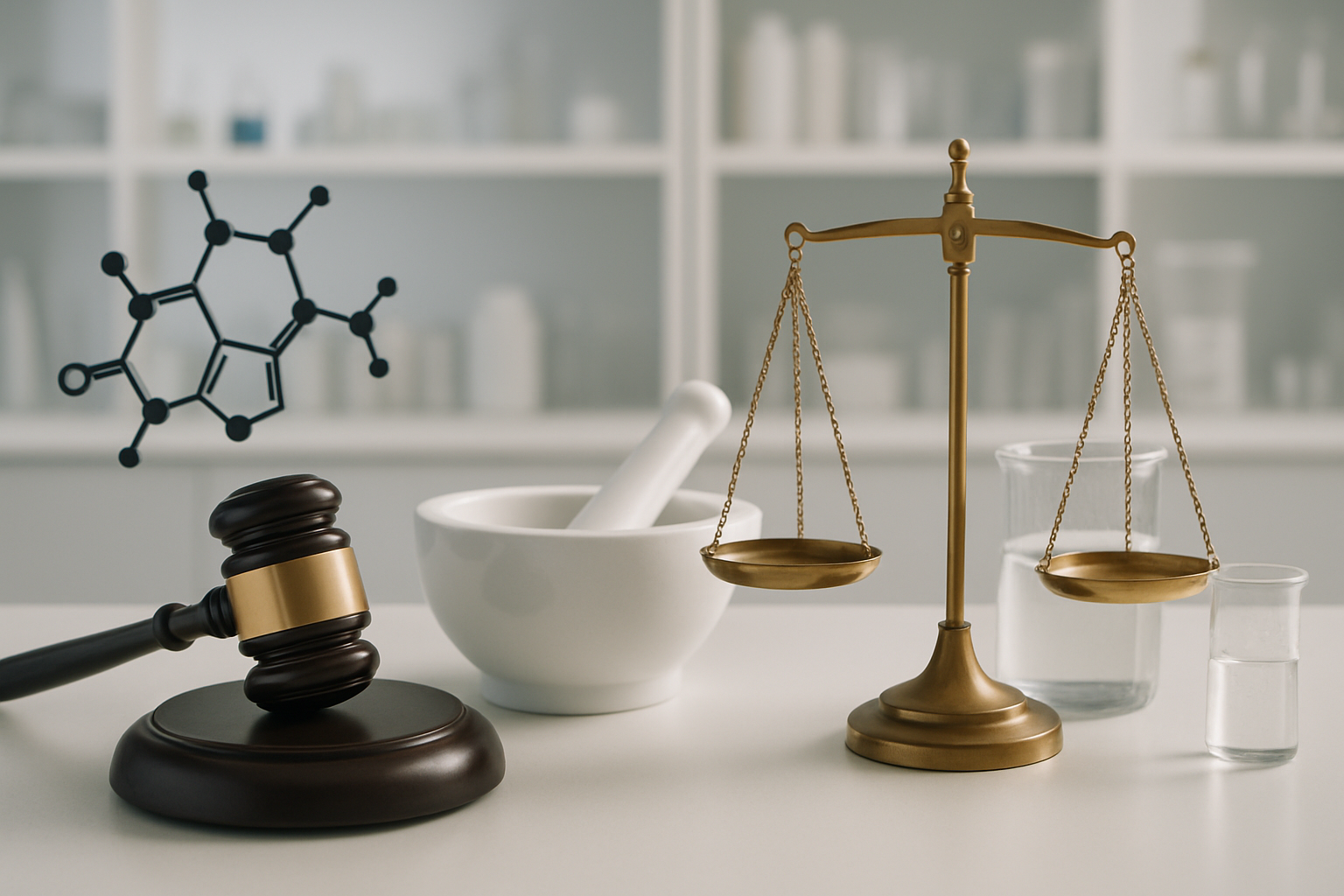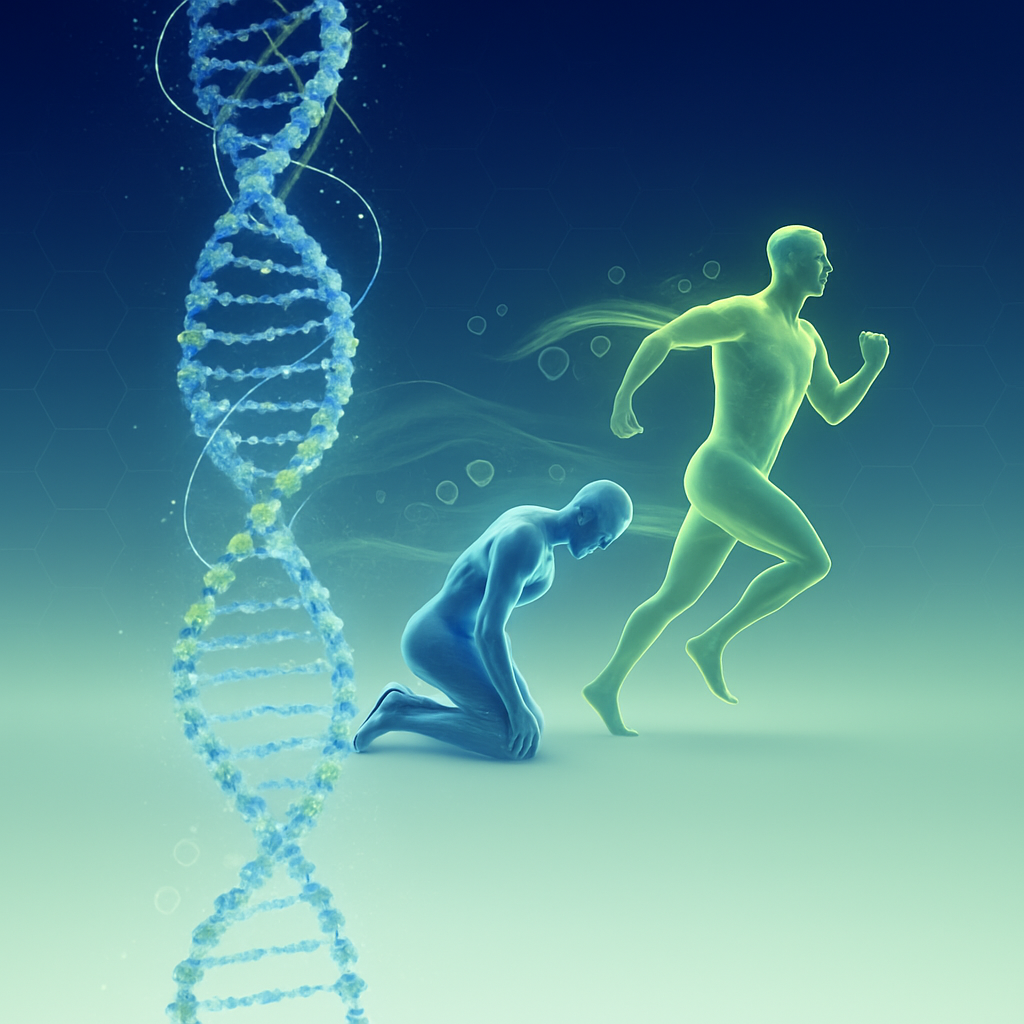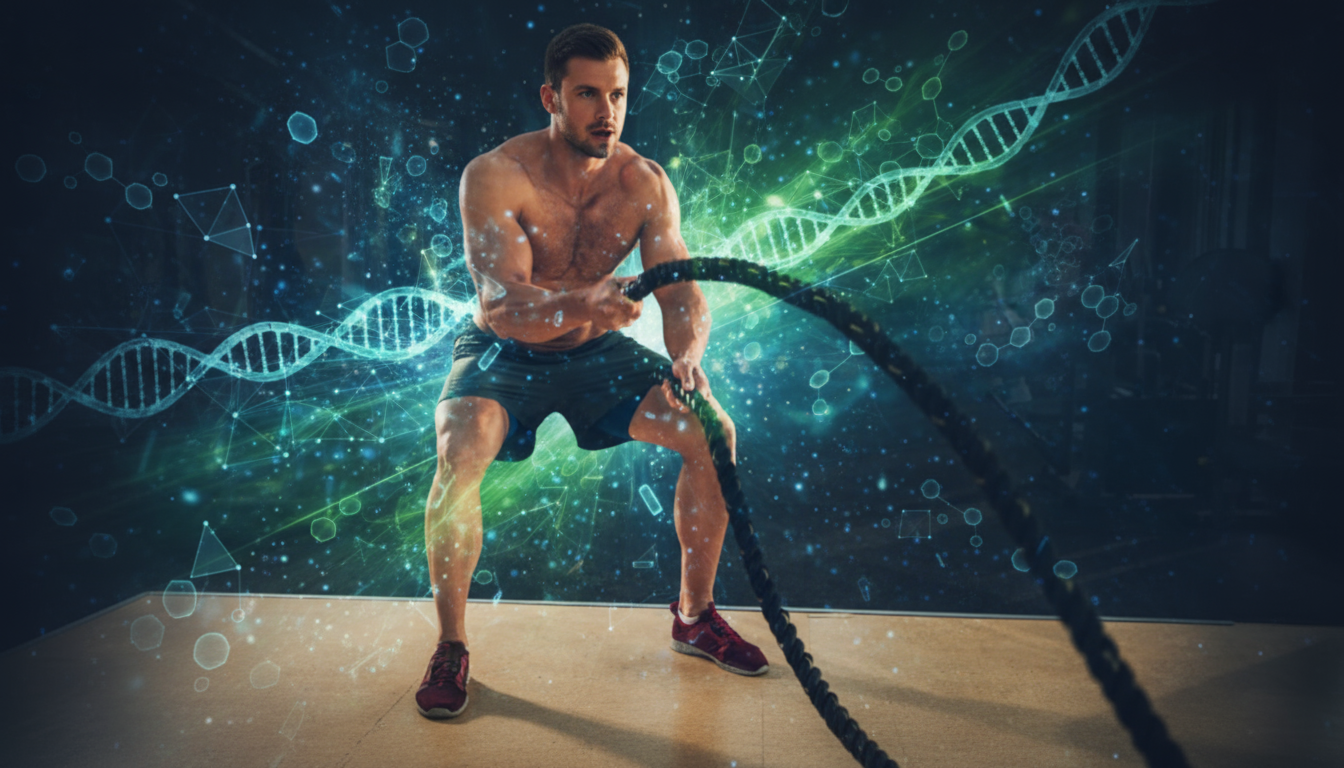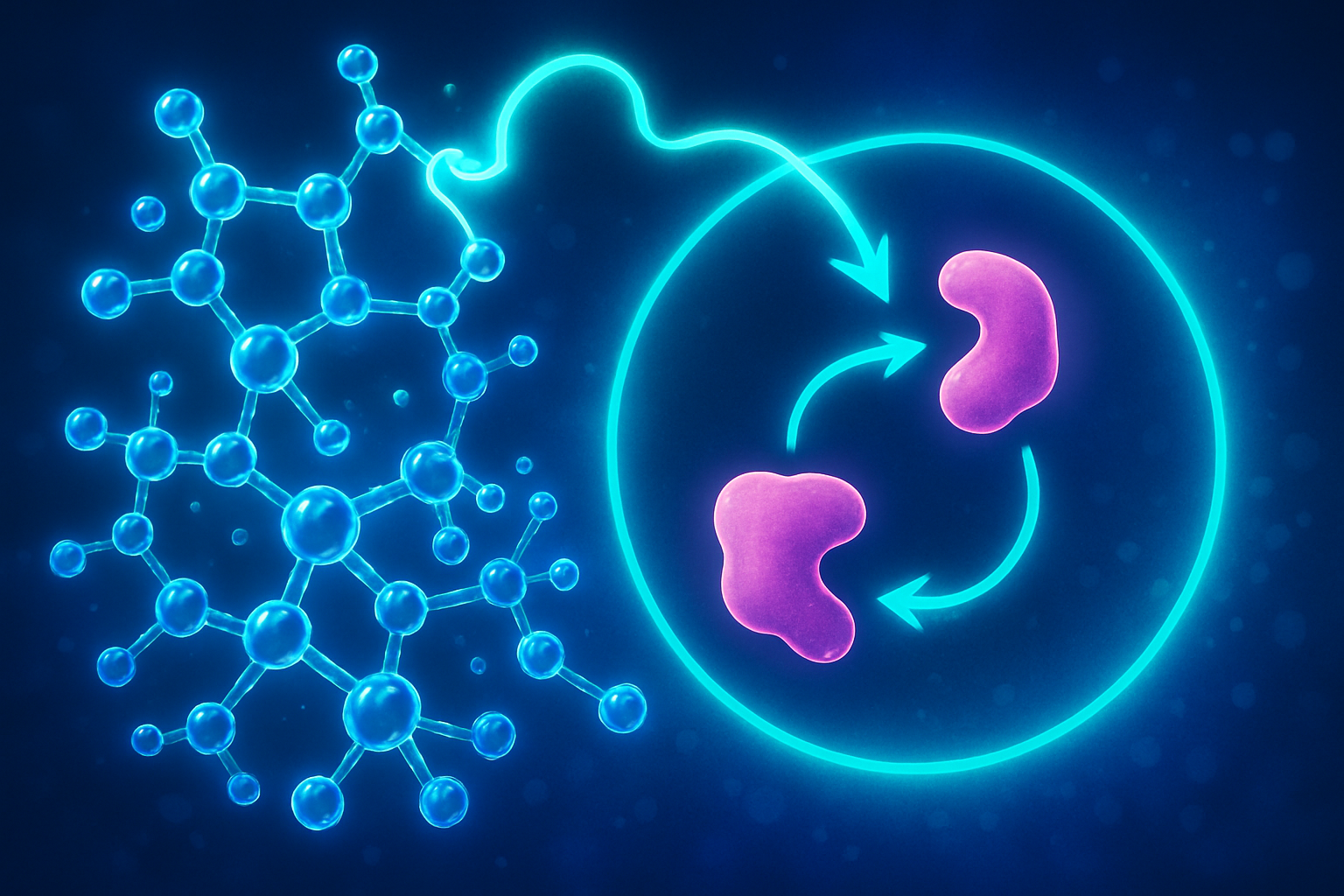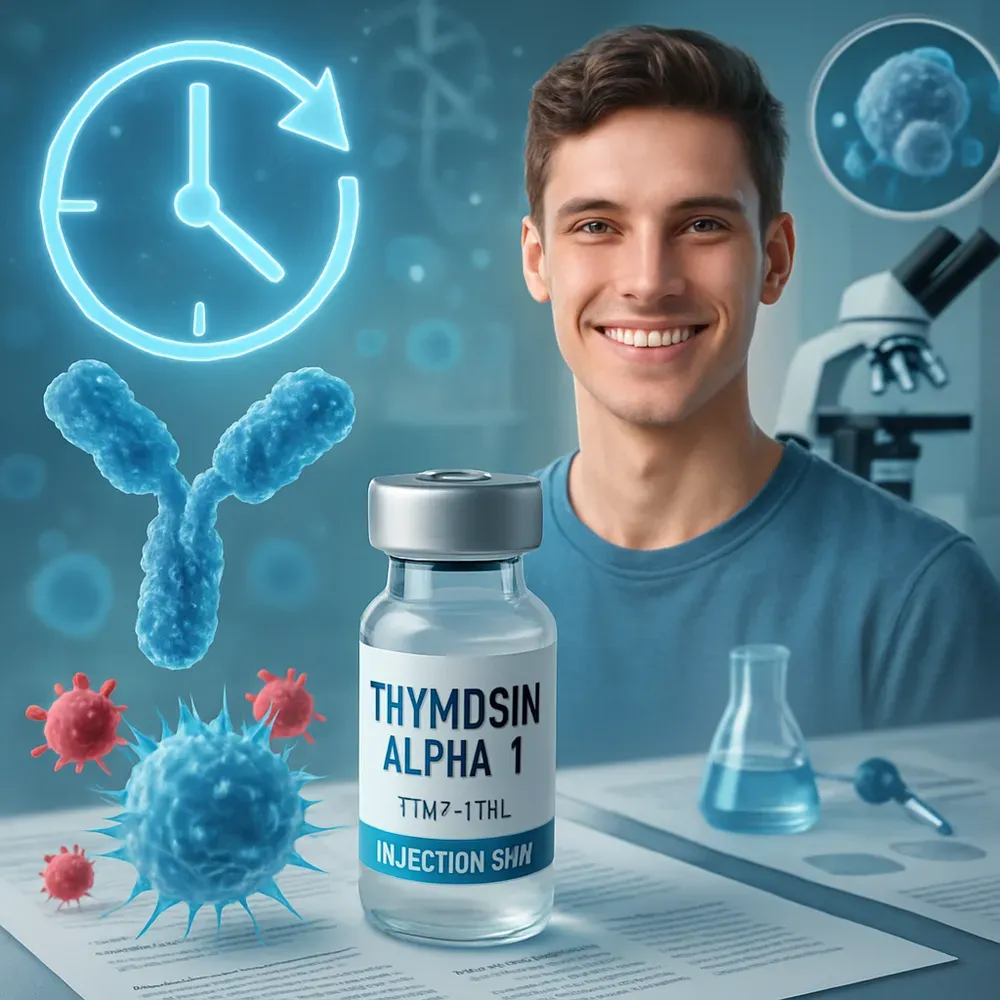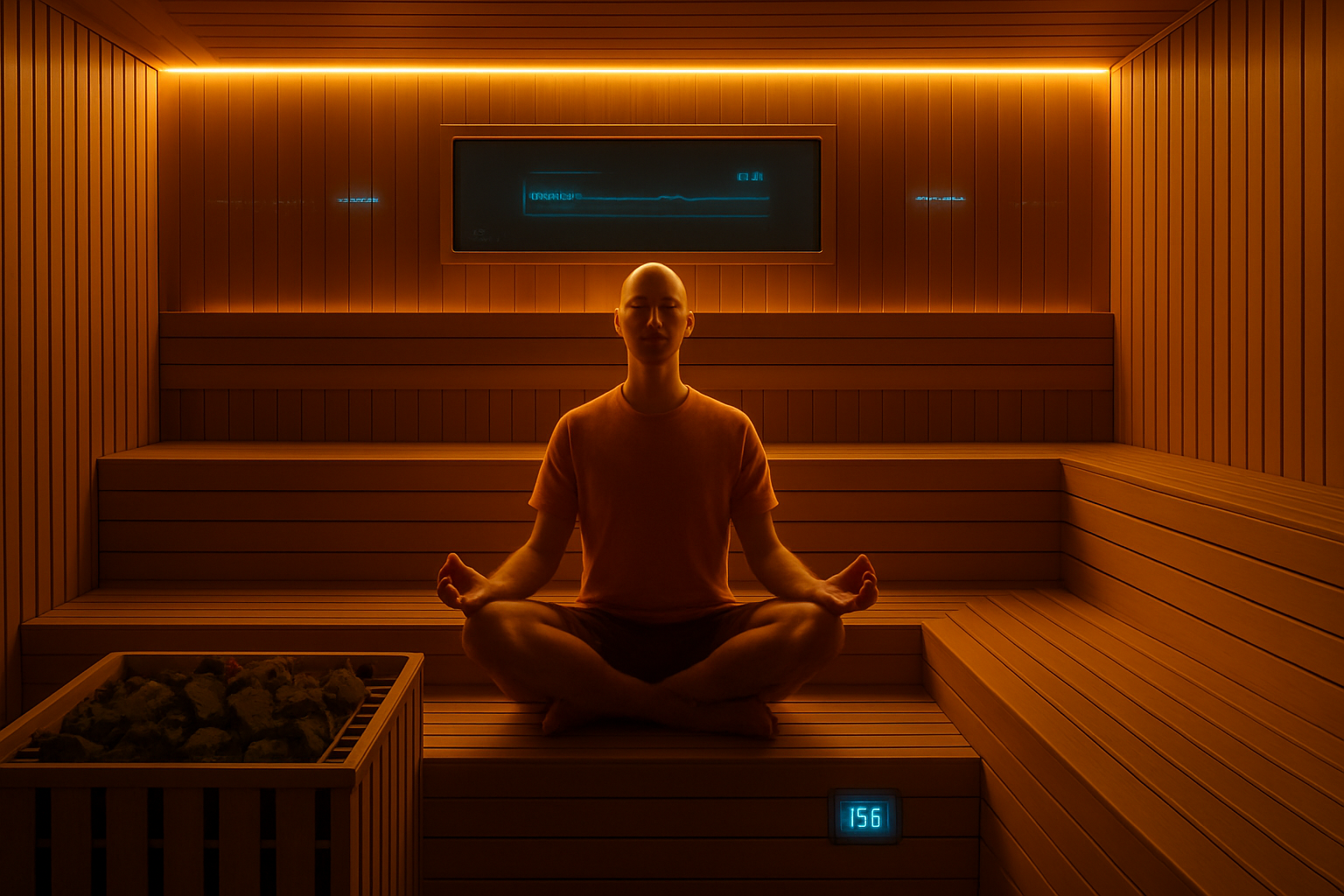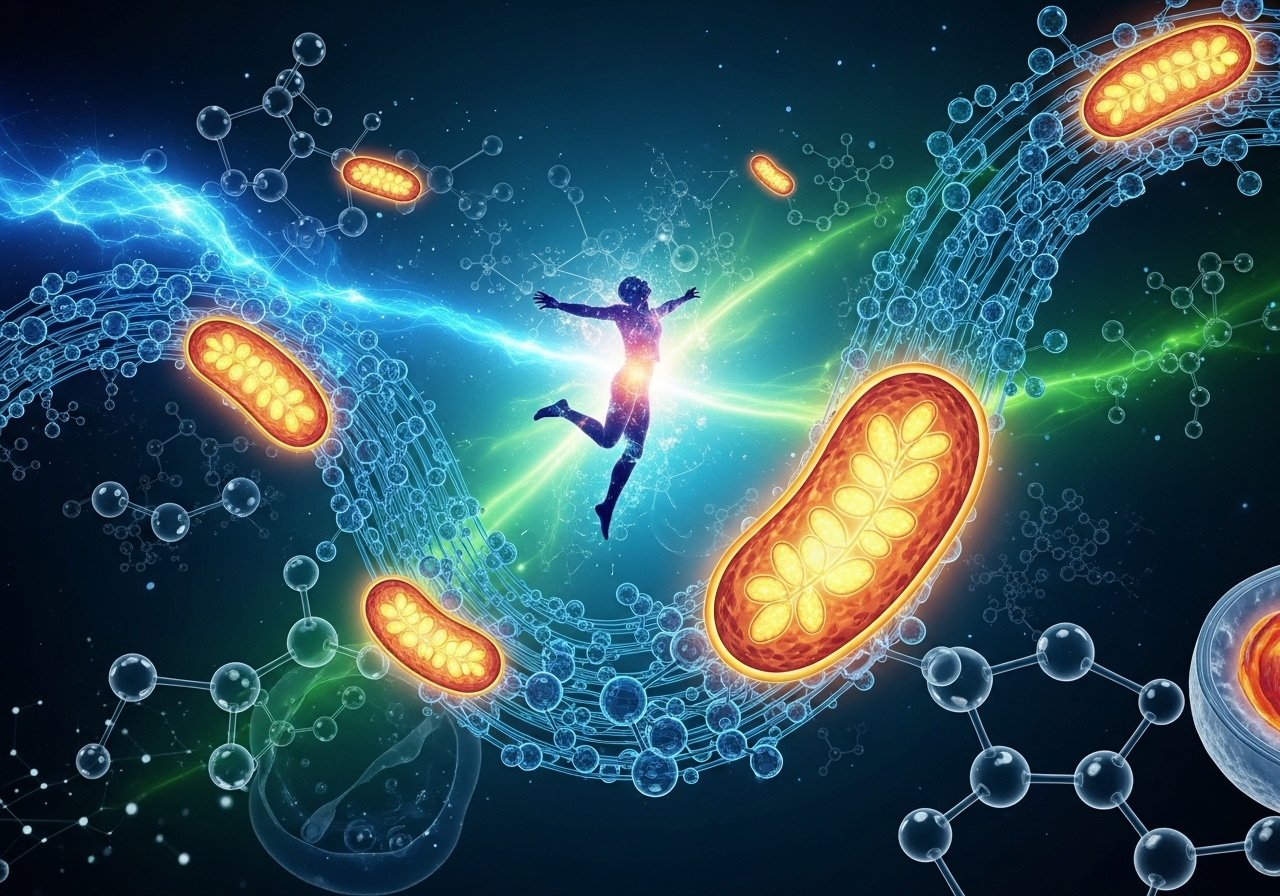Bacteriostatic Water: What It Is and How to Use It for Peptides
The Critical Difference Between Safe Peptide Reconstitution and Serious Infection Risk

Bacteriostatic water is the standard reconstitution solution for peptide therapy, yet many users don't fully understand what makes it different from other types of water or why it matters for peptide storage and safety.
This specialized water contains 0.9% benzyl alcohol as a preservative that prevents bacterial growth in multi-dose vials. Without this preservative, bacteria could proliferate in your reconstituted peptide solution within hours, creating serious infection risk.
Understanding bacteriostatic water—its composition, proper use, storage requirements, and alternatives—ensures safe, effective peptide reconstitution. Using the wrong type of water or storing bacteriostatic water improperly can compromise your entire peptide protocol.
This comprehensive guide covers everything about bacteriostatic water for peptides, from basic composition to advanced considerations, helping you reconstitute and store peptides safely.
What is Bacteriostatic Water?
Bacteriostatic water (BAC water) is sterile water for injection that contains 0.9% benzyl alcohol as a bacteriostatic preservative. The term "bacteriostatic" means it inhibits bacterial growth without necessarily killing existing bacteria.
The composition is straightforward: 99.1% sterile water and 0.9% benzyl alcohol. That's it—no other ingredients, minerals, or additives. The simplicity ensures compatibility with most peptides without introducing substances that might interact with or degrade the compounds.
Benzyl alcohol works by disrupting bacterial cell membranes and interfering with cellular metabolism. At 0.9% concentration, it prevents bacterial multiplication in the solution while remaining safe for injection at typical peptide doses.
The sterility is crucial. Bacteriostatic water is manufactured under sterile conditions, filtered to remove particles and microorganisms, and sealed in sterile vials. You're starting with a sterile solution—the benzyl alcohol then prevents contamination during storage and repeated use.
Medical grade bacteriostatic water meets USP (United States Pharmacopeia) standards for water for injection. This ensures appropriate purity, sterility, and preservative concentration. Quality matters when you're injecting the solution—look for products labeled as meeting USP standards.
The standard concentration of 0.9% benzyl alcohol balances effectiveness and safety. Higher concentrations provide stronger antibacterial effects but increase injection site irritation and potential toxicity. Lower concentrations might not adequately prevent bacterial growth. The 0.9% standard represents decades of medical use and optimization.
Bacteriostatic water differs from plain sterile water, which lacks preservatives and must be used immediately after opening. It differs from bacteriostatic sodium chloride (saline with preservative), which contains salt along with benzyl alcohol. For most peptides, plain bacteriostatic water is the appropriate choice.
Why Bacteriostatic Water is Essential for Peptide Reconstitution
Peptides arrive as lyophilized powder to maximize stability during storage and shipping. You must reconstitute them with liquid before injection. The choice of reconstitution solution directly affects safety and peptide longevity.
Preventing bacterial contamination
Once you reconstitute a peptide vial, it becomes vulnerable to bacterial contamination. Each time you insert a needle to draw a dose, you risk introducing bacteria despite alcohol-wiping the stopper. Room temperature peptide solution provides an excellent growth medium for bacteria.
Without preservatives, bacterial contamination can occur within hours. By the time you take your second or third dose from the vial, bacterial counts might have increased dramatically. Injecting contaminated solution causes infections ranging from local abscesses to serious systemic infections.
Bacteriostatic water's benzyl alcohol prevents this bacterial multiplication. Even if a few bacteria enter the vial during needle insertion, they cannot proliferate. Your peptide solution remains safe for weeks of repeated use.
Extending peptide storage time
Most peptides remain stable for 2-4 weeks after reconstitution when stored in the refrigerator with bacteriostatic water. This matches typical usage patterns—a 5mg vial with 250mcg daily doses provides 20 doses spanning about three weeks.
Without bacteriostatic water, you'd need to reconstitute fresh vials much more frequently or risk using degraded or contaminated peptides. This increases cost and complexity while potentially compromising results.
Multi-dose vial compatibility
Bacteriostatic water is specifically designed for multi-dose vials—containers you'll access multiple times over days or weeks. The preservative maintains safety across repeated needle punctures and partial vial use.
Single-dose vials don't require preservatives since you use the entire contents immediately. But peptide vials are multi-dose by nature—you typically take small amounts over extended periods.
Standard medical practice
Healthcare facilities use bacteriostatic water for reconstituting injectable medications used over multiple doses. Adopting this medical standard for peptide therapy ensures you're following established safety protocols.
Bacteriostatic Water vs. Other Reconstitution Solutions
Understanding alternatives helps you choose the right solution and avoid dangerous substitutions.
Sterile Water for Injection
Sterile water contains no preservatives. It's appropriate for single-use applications where the entire vial is used immediately after opening. For peptides stored and used over days or weeks, sterile water lacks the antibacterial protection needed.
Sterile water is significantly cheaper than bacteriostatic water. However, the cost difference becomes irrelevant when you consider that using sterile water for multi-dose peptide vials creates serious infection risk.
Some very large single-dose situations might use sterile water—for instance, if you were reconstituting an entire 10mg vial and immediately transferring the contents to multiple syringes for a week's worth of pre-loaded doses. Even then, bacteriostatic water works fine and provides additional safety.
Bacteriostatic Sodium Chloride (Saline)
Bacteriostatic saline contains 0.9% sodium chloride (salt) plus 0.9% benzyl alcohol. Some growth hormone preparations specifically require bacteriostatic saline rather than plain bacteriostatic water.
For most peptides, however, bacteriostatic water is preferred. The salt in bacteriostatic saline is unnecessary and might affect some peptides. Unless your peptide documentation specifically calls for bacteriostatic saline, use bacteriostatic water.
Sodium Chloride Injection (Plain Saline)
Regular saline contains 0.9% sodium chloride without preservatives. Like sterile water, it's for immediate single-use. Don't use plain saline for reconstituting multi-dose peptide vials.
Tap Water
Never, under any circumstances, use tap water for peptide reconstitution. Tap water contains bacteria, minerals, chlorine, and other contaminants that will contaminate your peptide and create serious infection risk. Tap water is absolutely not sterile and is completely inappropriate for injection.
Distilled Water from Stores
Store-bought distilled water is not sterile. While distillation removes minerals, the water isn't manufactured under sterile conditions and contains bacteria. It's meant for appliances like humidifiers, not injection.
Even if you boiled distilled water to kill bacteria, it wouldn't have preservatives for multi-dose use. Never use non-sterile water for peptide reconstitution.
Bacteriostatic Water Specifically for Peptides
Some suppliers market "bacteriostatic water for peptides" at premium prices. This is typically standard USP bacteriostatic water with peptide-focused marketing. As long as the product meets USP standards with 0.9% benzyl alcohol, it's appropriate regardless of marketing language.
How to Use Bacteriostatic Water for Peptide Reconstitution
Proper technique ensures sterile reconstitution and optimal peptide stability.
Supplies needed
You'll need your bacteriostatic water vial (10ml or 30ml size), peptide vial, syringe for drawing bacteriostatic water (3ml or 5ml), sterile needle (18-21 gauge works well for drawing liquid), alcohol wipes, and a clean workspace.
Step-by-step reconstitution
- Start with clean hands washed thoroughly with soap and water. Remove your peptide vial from frozen or refrigerated storage and let it reach room temperature (15-30 minutes). Cold peptides shouldn't be reconstituted immediately.
- Clean the rubber stopper of your bacteriostatic water vial with an alcohol wipe. Let it air dry for a few seconds. Attach your needle to the syringe and draw back the plunger to fill the syringe with air equal to the amount of water you plan to draw.
- Insert the needle through the bacteriostatic water vial's rubber stopper. Push the air from your syringe into the vial—this prevents vacuum formation. Invert the vial and slowly pull back the plunger to draw your desired amount (typically 1-3ml depending on your concentration preferences).
- Remove the needle from the bacteriostatic water vial. Check for air bubbles by tapping the syringe and pushing the plunger slightly to expel air.
- Clean the rubber stopper on your peptide vial with a fresh alcohol wipe. Let it air dry. Insert the needle through the peptide vial's rubber stopper, but aim the needle toward the vial wall rather than directly at the powder.
- Slowly inject the bacteriostatic water down the vial wall. Let it run gently over the powder rather than forcefully squirting directly onto it. This gentle approach prevents damage to delicate peptide bonds.
- Remove the needle after all water is added. Don't shake the vial—shaking creates foam and can damage peptides. Instead, gently swirl or roll the vial between your palms. You can also let it sit in the refrigerator for 10-20 minutes to dissolve naturally.
Once fully dissolved (the solution should be clear), label your vial with the reconstitution date, concentration, and units per dose for your reference.
Calculating volumes
For a 5mg peptide vial, 2ml of bacteriostatic water is common, creating a 2.5mg/ml concentration. You can use 1-3ml depending on your dosing preferences—more water creates lower concentration with finer dose control, less water creates higher concentration with smaller injection volumes.
Use a peptide calculator to determine how much bacteriostatic water creates convenient dosing for your protocol. Once you decide on a volume, measure it accurately—using 2.2ml when you calculated for 2.0ml affects all your doses.
Bacteriostatic Water Storage and Handling
Proper storage maintains bacteriostatic water quality and safety.
Before opening
Unopened bacteriostatic water vials can be stored at room temperature in a clean, dry location away from direct sunlight. Check expiration dates—don't use expired bacteriostatic water even if the vial is unopened.
Some users refrigerate unopened bacteriostatic water, which is fine but unnecessary. The sealed, sterile environment prevents contamination at room temperature.
After opening
Once you puncture the rubber stopper with a needle, the vial is "opened" in terms of storage requirements. The USP standard specifies that multi-dose vials with benzyl alcohol preservative should be discarded 28 days after first puncture.
This 28-day limit assumes proper handling—cleaning the stopper before each needle insertion, using sterile needles, and avoiding contamination. In practice, many users successfully use bacteriostatic water for several months after opening if stored properly and handled with excellent sterile technique.
Refrigerating opened bacteriostatic water may extend its usability, though room temperature storage is acceptable within the manufacturer's recommended timeframe. Some users prefer refrigeration as an extra precaution.
Sterility maintenance
Every time you insert a needle into your bacteriostatic water vial, clean the rubber stopper with an alcohol wipe first. This simple step prevents most contamination. Let the alcohol dry before inserting the needle—wet alcohol can get pulled into the vial.
Use new, sterile needles when drawing from bacteriostatic water. Never reuse needles that have touched other surfaces or vials, as this introduces contamination.
Visual inspection
Before each use, visually inspect your bacteriostatic water. It should be crystal clear without any cloudiness, discoloration, or floating particles. Any visible contamination means you should discard the vial and use a new one.
The rubber stopper should be intact without tears or pieces missing. Damaged stoppers can allow contamination.
Labeling opened vials
Write the date when you first puncture the vial on the label. This helps you track how long it's been open and when it should be discarded according to the 28-day guideline.
Bacteriostatic Water Safety Considerations
While generally very safe, understanding potential concerns helps you use bacteriostatic water appropriately.
Benzyl alcohol sensitivity
Most people tolerate 0.9% benzyl alcohol without issues at typical peptide doses. However, some individuals experience sensitivity including mild burning during injection, temporary redness at injection sites, or headaches in rare cases.
If you suspect benzyl alcohol sensitivity, you might try sterile water for single-use reconstitution (using the entire vial within hours) or bacteriostatic saline to see if the sodium chloride somehow reduces irritation (though this is theoretical).
True allergic reactions to benzyl alcohol are extremely rare but would manifest as hives, significant swelling, or respiratory symptoms. Discontinue use and seek medical attention if severe reactions occur.
Neonatal considerations
Benzyl alcohol can be toxic to newborns and premature infants, potentially causing a syndrome called "gasping syndrome." This is why bacteriostatic water is contraindicated for use in neonates.
This concern is irrelevant for adult peptide use but explains why some medical literature emphasizes benzyl alcohol risks—those warnings primarily apply to vulnerable infant populations, not adults using small peptide doses.
Injection volume limits
At typical peptide doses (injecting 0.1-0.5ml at a time), benzyl alcohol exposure is minimal and safe. Even at the preservative concentration, you're getting less than 5mg of benzyl alcohol per injection.
If you were injecting large volumes repeatedly (several ml multiple times daily), cumulative benzyl alcohol exposure could become a concern. This is extremely unlikely with peptide protocols that typically use small volumes.
Pregnancy and breastfeeding
Peptide use during pregnancy and breastfeeding isn't recommended due to unknown effects on fetal development and milk composition. If you were to use peptides in these situations (against medical advice), bacteriostatic water's benzyl alcohol would be an additional concern, though likely minor compared to the unknown peptide effects.
Quality and contamination concerns
Low-quality or counterfeit bacteriostatic water might not meet sterility standards, contain incorrect benzyl alcohol concentrations, or have other quality issues. Purchase from reputable medical suppliers rather than unknown sources.
Contamination during use from poor sterile technique poses greater risk than the bacteriostatic water itself. Always follow proper sterile procedures when drawing from bacteriostatic water vials.
Bacteriostatic Water Alternatives and Special Cases
Most peptides use bacteriostatic water, but specific situations might require alternatives.
Peptides requiring specific reconstitution solutions
Some growth hormone products specifically require bacteriostatic sodium chloride (saline with preservative) rather than plain bacteriostatic water. Always check your peptide's specific requirements.
A few peptides need acidic solutions for proper dissolution. If your peptide comes with specific reconstitution instructions calling for acetic acid or another solution, follow those directions rather than using standard bacteriostatic water.
Single-use approaches
If you prefer avoiding benzyl alcohol preservative entirely, you could reconstitute each peptide vial with sterile water and immediately divide it into multiple syringes for single use. Store these pre-loaded syringes in the refrigerator and use within a few days.
This approach eliminates the need for preservatives but creates more work and requires more syringes. It's a viable option for those with benzyl alcohol sensitivity or philosophical preferences for preservative-free options.
Oral peptide use
Some peptides like BPC-157 are occasionally taken orally rather than injected. For oral use, reconstitution solution matters less since you're not injecting it. However, bacteriostatic water still provides the safety benefits of preventing bacterial growth in your peptide solution stored over time.
Large-scale reconstitution
Research laboratories reconstituting many peptide vials might prepare larger volumes of bacteriostatic water by adding benzyl alcohol to sterile water. This requires precise measurement, sterile technique, and quality control—it's not recommended for individual users.
Purchasing pre-made bacteriostatic water ensures proper sterility, accurate preservative concentration, and appropriate quality for injection use.
Troubleshooting Bacteriostatic Water Issues
Can't find bacteriostatic water locally
Bacteriostatic water is available from online medical suppliers, compounding pharmacies, and some peptide suppliers. It's a standard medical product, so reputable suppliers carry it.
If local pharmacies don't stock it, ask if they can order it. Many pharmacies can obtain medical supplies like bacteriostatic water even if not regularly stocked.
Bacteriostatic water seems cloudy
Crystal clear bacteriostatic water should never be cloudy. Cloudiness indicates contamination or degradation. Discard cloudy bacteriostatic water and use a new vial.
Check that you're storing bacteriostatic water properly—away from temperature extremes and direct sunlight. Improper storage can affect quality.
Injection burns with bacteriostatic water
Mild burning during injection can occur from the benzyl alcohol, especially if injecting cold solution. Let bacteriostatic water and reconstituted peptides reach room temperature before injection to minimize burning sensation.
Injecting very slowly also reduces burning. If burning persists despite room temperature injection and slow technique, you might have benzyl alcohol sensitivity.
How to know if bacteriostatic water is contaminated
Visual inspection is your first check—look for cloudiness, particles, or discoloration. However, bacterial contamination isn't always visible.
Following proper sterile technique (cleaning stoppers, using new needles, clean hands) prevents most contamination. If you develop injection site infections or multiple injection reactions, contaminated bacteriostatic water or peptide solution might be the cause.
When in doubt, discard the vial and use fresh bacteriostatic water. The cost of a new vial is minimal compared to infection risk.
Bacteriostatic water past 28 days
The USP 28-day guideline after first puncture is conservative. Many users successfully use bacteriostatic water for months beyond this if stored properly and handled with excellent sterile technique.
However, the guideline exists for safety reasons. If you're using bacteriostatic water beyond 28 days, be especially vigilant about sterile technique, visual inspection, and monitoring for any signs of contamination or reactions.
Buying Bacteriostatic Water: What to Look For
Quality matters when selecting bacteriostatic water for injection use.
USP certification
Look for products labeled as meeting USP (United States Pharmacopeia) standards. This certification ensures appropriate purity, sterility, and preservative concentration.
USP bacteriostatic water should state "Bacteriostatic Water for Injection, USP" on the label. This exact wording indicates the product meets medical standards.
Benzyl alcohol concentration
Verify the product contains 0.9% benzyl alcohol. This standard concentration balances antibacterial effectiveness with safety and tolerability.
Some products might list this as "9 mg/mL" which equals 0.9% concentration.
Sterility assurance
Quality bacteriostatic water is manufactured under sterile conditions and sealed in sterile vials. The vial should have a metal flip-off cap covering the rubber stopper, indicating it hasn't been opened since manufacture.
Avoid products in bottles without proper sterile seals or where sterility is questionable.
Vial sizes
Common sizes are 10ml and 30ml vials. For home peptide use, 10ml vials are usually sufficient—you'll use them before the 28-day guideline expires. Larger 30ml vials make sense if you're reconstituting multiple peptides or using large volumes.
Reputable suppliers
Purchase from established medical suppliers, compounding pharmacies, or well-regarded peptide suppliers. Avoid suspiciously cheap products from unknown sources—quality control matters for injectable solutions.
Price comparison helps identify reasonable market rates. Bacteriostatic water typically costs $10-15 for 10ml vials, $15-25 for 30ml vials from reputable suppliers.
Expiration dates
Check expiration dates when purchasing and before use. Expired bacteriostatic water should be discarded even if the vial appears normal.
Storage and shipping
Bacteriostatic water should arrive in good condition without damage to the vial or stopper. While room temperature shipping is acceptable, some suppliers ship refrigerated or with ice packs as an extra quality measure.
Bacteriostatic Water, Calculator ,and Dosing
While bacteriostatic water doesn't require complex calculations like peptides do, understanding volume requirements helps with planning.
Determining how much you need
Calculate based on your reconstitution preferences and peptide usage. If you reconstitute 5mg vials with 2ml each and use one vial per month, you need 2ml monthly. A 10ml bacteriostatic water vial provides enough for 5 peptide vials.
Factor in some waste—you won't get every last drop from the bacteriostatic water vial, and you might make errors requiring fresh reconstitution. Having extra bacteriostatic water on hand prevents running out mid-protocol.
Cost efficiency
Larger vials provide better per-ml cost efficiency. A 30ml vial might cost 50% more than a 10ml vial but provides 3x the volume. However, if you can't use 30ml before it expires or passes the 28-day puncture guideline, the savings are lost.
Reconstitution volume strategies
More bacteriostatic water creates lower peptide concentration, which means drawing more units on your syringe per dose but with finer dose control. Less bacteriostatic water creates higher concentration with smaller injection volumes but less precision.
Most users find 2ml of bacteriostatic water per 5mg peptide vial creates convenient concentrations for typical doses. Adjust based on your specific needs and syringe size.
Bacteriostatic Water in Clinical and Research Settings
Understanding how medical professionals use bacteriostatic water provides context for peptide applications.
Medical facility use
Hospitals and clinics use bacteriostatic water for reconstituting injectable medications administered over multiple doses. The same product and principles apply whether reconstituting antibiotics, vaccines, or peptides.
Medical settings follow strict sterile technique protocols and dispose of multi-dose vials after the recommended timeframe. These practices should inform home peptide use.
Research laboratory applications
Research labs working with peptides use bacteriostatic water for preparing working solutions. They typically prepare fresh solutions more frequently than home users might, ensuring maximum peptide stability for experiments.
Lab-grade bacteriostatic water might have additional quality control documentation like certificates of analysis, though the product itself is essentially the same as medical-grade bacteriostatic water meeting USP standards.
Veterinary medicine
Veterinarians use bacteriostatic water for reconstituting medications for animals. The same principles apply across species—multi-dose vials need preservatives to prevent bacterial growth.
Pet owners giving peptides to animals should follow the same reconstitution and storage guidelines as for human use.
Differences from research use
Home peptide users typically store reconstituted peptides longer than clinical or research settings might. This makes proper bacteriostatic water use even more critical—your safety depends on that benzyl alcohol preventing bacterial growth across weeks of storage.
What is bacteriostatic water and why do I need it for peptides?
Bacteriostatic water is sterile water for injection containing 0.9% benzyl alcohol as a preservative that prevents bacterial growth. You need it for peptide reconstitution because peptides arrive as lyophilized powder requiring liquid reconstitution before injection. Once reconstituted, peptide vials become multi-dose containers you'll access repeatedly over days or weeks. Each needle insertion risks introducing bacteria, and peptide solution at room or refrigerator temperature provides an excellent bacterial growth medium. Without preservatives, contamination could occur within hours. The benzyl alcohol in bacteriostatic water prevents bacterial multiplication even if a few bacteria enter during use, keeping your peptide solution safe for 2-4 weeks of repeated access. This is essential because most peptide protocols involve taking small doses from the same vial over extended periods. Using plain sterile water without preservatives for multi-dose vials creates serious infection risk. Bacteriostatic water follows standard medical practice for any multi-dose injectable medication.
Can I use regular water or sterile water instead of bacteriostatic water?
No, never use regular tap water or non-sterile water for peptide reconstitution—this creates extreme infection risk. Tap water and store-bought distilled water contain bacteria and aren't manufactured under sterile conditions. Even boiling doesn't make them appropriate for injection. Sterile water for injection (without preservatives) is safe but only for single-use immediate administration. If you reconstitute a peptide with plain sterile water and store it for multiple doses over days or weeks, bacterial contamination becomes highly likely. Each needle insertion introduces potential bacteria that multiply rapidly without preservatives. You might develop local abscesses, injection site infections, or serious systemic infections. Bacteriostatic water costs only $10-15 per 10ml vial—a small investment for safety compared to infection risks. The only appropriate alternatives are bacteriostatic saline (for specific peptides requiring it) or using sterile water with immediate single-dose use (reconstitute and immediately divide into multiple pre-loaded syringes). For standard multi-dose peptide vial use, bacteriostatic water is essential.
How long does bacteriostatic water last after opening?
The USP standard specifies that multi-dose vials with benzyl alcohol preservative should be discarded 28 days after first puncture. This 28-day guideline assumes proper handling with excellent sterile technique—cleaning the rubber stopper before each needle insertion, using new sterile needles only, and maintaining proper storage conditions. Label your bacteriostatic water vial with the date of first puncture to track this timeline. In practice, many users successfully use bacteriostatic water for several months beyond 28 days if handled with meticulous sterile technique and stored properly. However, the conservative guideline exists for safety. Unopened bacteriostatic water vials stored at room temperature in a clean, dry location away from sunlight can be kept until the manufacturer's expiration date. Once opened, refrigeration may extend usability though room temperature storage is acceptable within recommended timeframes. Always visually inspect bacteriostatic water before each use—it should be crystal clear without cloudiness, discoloration, or particles. Any visible contamination means discard and use a new vial.
What's the difference between bacteriostatic water and bacteriostatic saline?
Bacteriostatic water contains only sterile water plus 0.9% benzyl alcohol preservative. Bacteriostatic saline (bacteriostatic sodium chloride) contains 0.9% sodium chloride (salt) plus 0.9% benzyl alcohol. Both prevent bacterial growth through the benzyl alcohol preservative. For most peptides including BPC-157, TB-500, Ipamorelin, and similar compounds, bacteriostatic water is the preferred reconstitution solution. The salt in bacteriostatic saline is unnecessary for these peptides and might affect stability or solubility in some cases. However, some growth hormone preparations specifically require bacteriostatic saline rather than plain water for proper reconstitution. Always check your specific peptide's requirements. If documentation doesn't specify, bacteriostatic water is the safe default choice. Both solutions are equally effective at preventing bacterial contamination through the benzyl alcohol preservative—the difference is whether salt is needed for the specific peptide formulation. Bacteriostatic water is more universally applicable across different peptide types.
Where can I buy bacteriostatic water?
Where can I buy bacteriostatic water?Bacteriostatic water is available from several sources. Online medical suppliers specializing in injection supplies carry USP bacteriostatic water—search for medical supply companies selling to healthcare providers and home care users. Compounding pharmacies often stock bacteriostatic water or can order it for customers. Some regular pharmacies can special order it even if not regularly stocked—ask your local pharmacy. Peptide suppliers frequently offer bacteriostatic water alongside peptides since customers need it for reconstitution. Some research chemical suppliers include it in their product lines. When purchasing, look for products labeled "Bacteriostatic Water for Injection, USP" confirming it meets United States Pharmacopeia standards. Verify it contains 0.9% benzyl alcohol. Check for proper sterile sealing with flip-off caps over rubber stoppers. Common vial sizes are 10ml ($10-15) and 30ml ($15-25) from reputable suppliers. Avoid suspiciously cheap products from unknown sources—quality control matters for injectable solutions. Check expiration dates and ensure vials arrive undamaged. While local availability varies, online ordering from established medical suppliers provides reliable access.
Is bacteriostatic water safe for injection?
Yes, bacteriostatic water is safe for injection when used properly at typical peptide doses. It's a standard medical product used in hospitals and clinics for reconstituting injectable medications. The 0.9% benzyl alcohol preservative concentration is well-tolerated by most adults at the small volumes used in peptide therapy (typically 0.1-0.5ml per injection). At these doses, benzyl alcohol exposure is minimal—less than 5mg per injection. Most people experience no issues with bacteriostatic water. Some individuals might notice mild burning during injection from the benzyl alcohol, usually minimized by injecting at room temperature rather than cold and injecting slowly. True allergic reactions are extremely rare. Benzyl alcohol can be toxic to newborns and premature infants, which is why bacteriostatic water is contraindicated for neonates—this concern doesn't apply to adult peptide use. Safety depends on proper use: purchase quality USP-certified bacteriostatic water, maintain sterile technique when drawing from vials, follow proper storage guidelines, and discard vials showing any signs of contamination. The preservative makes bacteriostatic water safer for multi-dose use than sterile water without preservatives.
Legal Disclaimer:
These statements have not been evaluated by the FDA and are not intended to diagnose, treat, cure, or prevent any disease. This information is for educational and research purposes only.

